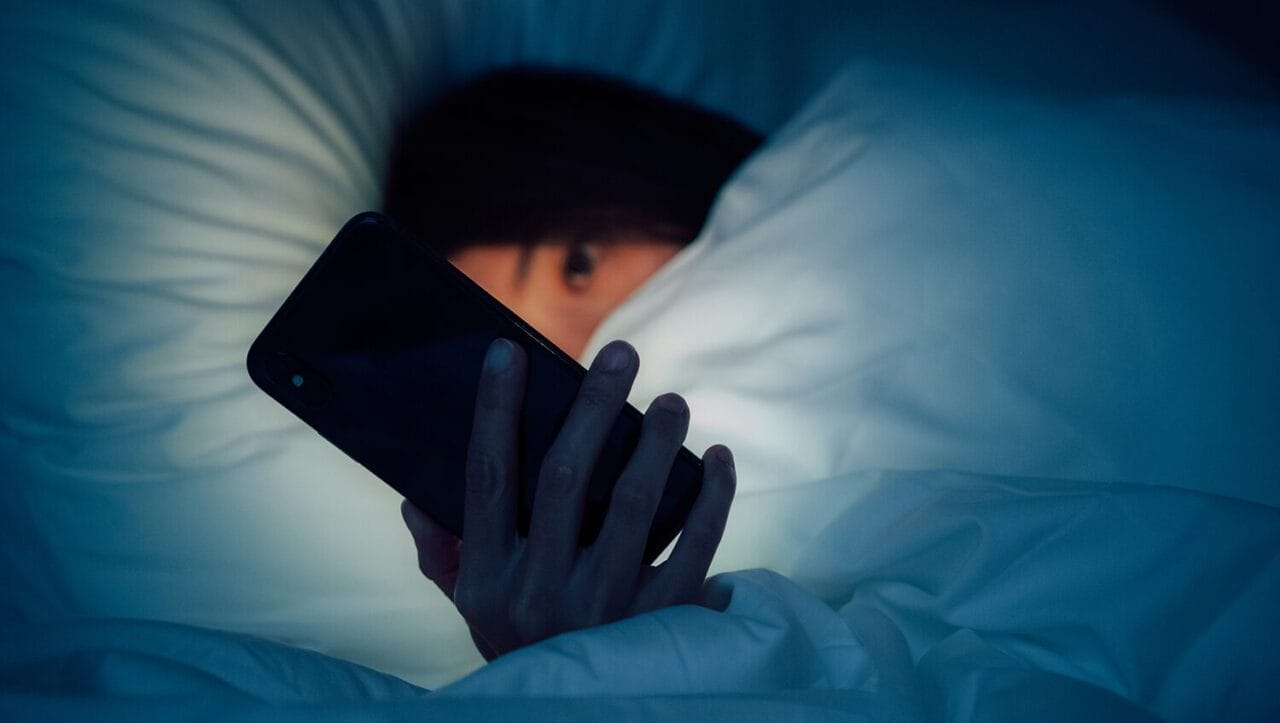A Mental Health Diagnosis Takes Much More Than a Scroll Through TikTok
March 28, 2023

Yiu Yu Hoi, Getty Images
Access to mental health information needs to be more accessible, but an expert says that doesn't mean TikTok and other social media is the right answer.
With the rise of social media in recent generations, there has been a movement toward promoting awareness of and reducing the stigma surrounding mental health on many online platforms.
Instagram accounts like @nedratawwab, @the.holistic.psychologist, and @askdrjess are among the users that work toward this goal — licensed psychologists and therapists sharing their expertise outside of their offices. Despite their efforts to responsibly share information, they only make up a small percentage of the very large population of users producing mental health-related content across social media.
Users without any related credentials are sharing images and videos describing their experiences with mental health struggles, offering guidance, and sharing mental health advice for others. Despite good intentions, these posts may do more harm than good: they could perpetuate the already existing stigma by producing and publishing information that can easily be misinterpreted.
For many people, social media can provide endless access to traditional resources that may not typically be accessible, considering the long wait times for a mental health professional and the rising costs of healthcare. Unfortunately, there’s very little to help people discern what is evidence-based from what is story-sharing, which can lead to a muddled understanding or an over-pathologizing of one’s own symptoms.
The context for self-diagnosis on TikTok and other social media
In tandem with the rise of health information-sharing on social media platforms, such as TikTok and Instagram, there is also an increase in people self-diagnosing, determining their own mental health diagnosis based on content they’ve seen. Though self-diagnosis has been around since before the internet — people would read books or engage with other forms of physical content to reach a conclusion about their own lives and experiences — readily accessible information online has really expanded the ability to reach millions of viewers in an instant.
While it is good to have awareness of symptoms or feelings, connecting with a mental health provider is most useful for accurately identifying the problem and developing a plan of action to address it.
Some people have been on a long search to categorize their symptoms, but if they don’t have access to a mental health professional, it’s hard to know where to turn next. There are plenty of barriers when it comes to the inaccessibility to mental health professionals — financial barriers, limited access to culturally competent providers, lack of services offered, limited availability of education and awareness, and social stigma surrounding diagnosis and treatment. For people of color and other marginalized people, these disparities are more significant, stemming from systemic racism, sexism, homophobia and more. In addition, there are some cultures where certain labels or diagnoses are still heavily stigmatized. Culture, beliefs, and values impact the way in which individuals understand and experience mental health. In my experience as a psychologist, I have seen a lot of families where there is a relative everyone referred to as “special,” who never really received the treatment they needed, and whose symptoms were not explored until well into adulthood.
From my perspective, these individuals who already have extraneous barriers find emotional resonance in stories and snippets from social media and feel as if they finally have answers to a mental health problem that they have been experiencing for some time.
The role of providers in addressing patients’ mental health self-diagnosis
Another important thing is to help patients recognize that various diagnoses have overlapping symptoms, so it’s crucial to understand how we, as provider-patient teams, tease this apart. For example, someone may be experiencing issues with sleep or anhedonia (not feeling very interested in things that they used to enjoy) or there may be some changes in their appetite — but that does not necessarily mean that they can be diagnosed with major depressive disorder. All of these issues may stem from another cause.
With more reports of medical gaslighting, this can result in tension between a patient and their provider, with a patient feeling unheard. Part of my duty as a psychologist is to educate patients about their symptoms or diagnosis. Providers must be aware that patients are searching for understanding and be mindful of how we approach a patient who presents with diagnostic inquiries or self-diagnosis.
I have had patients approach me after having come across information, and it created an incredible opportunity to explore something more or has given me insight into how we can address certain issues. After going through a diagnostic evaluation process, we can then explore whether the patient meets criteria for the particular diagnosis they are wondering about. But these conversations are essential. They’re essential because there’s always the possibility that the self-diagnosis is incorrect and the symptoms they’re experiencing are related to another issue.
The key is that these self-diagnosing individuals already have access to a provider with whom they can have this dialogue. My concern is that, a lot of the time, people who come across misinformation do not have access to a trusted provider to whom they can turn and ask specific questions about their symptoms.
A diagnosis is more than a checklist of symptoms
The process for diagnosing can be quite complex. As mental health providers, we use a thorough evaluative process that includes a review of symptoms, assessments, interviews, and examinations to determine whether a person meets criteria for a certain diagnosis or diagnoses.
Providers use a standardized process of diagnosing a mental illness or disorder based on the Diagnostic and Statistical Manual of Mental Disorders (DSM). The DSM is a classification manual of mental disorders and was created with the purpose of establishing consistency and reliability when diagnosing patients. For each possible diagnosis, there is a set of criteria specific to the diagnosis.
“My concern is that, a lot of the time, people who come across misinformation do not have access to a trusted provider to whom they can turn and ask specific questions about their symptoms.”
Additionally, a comprehensive evaluation can also help to identify what we term a “differential diagnosis”— when symptoms overlap and could indicate multiple possible diagnoses. I also try to explain to my patients that symptoms could be due to something situational or related to other factors.
I try to ask, “What other things have you been experiencing?” What is going on in your life?” “How have you been feeling?” I still want to be able to help guide them in the direction of getting the confirmation or clarity they are seeking. We as providers need to make sure that patients are not lost in a sea of social media-driven armchair diagnoses. It is also important as providers that we hear our patients and not minimize their concerns.
It’s easy to dismiss this increased trend of turning to social media for health information instead of going to the doctor’s office to determine a diagnosis. But, as mental health providers in particular we can use this as an opportunity to form deeper connections and help our patients unearth truths that can help them move forward and not remain stuck in the symptoms with an endless stream of tailored content designed to keep them rooted there.
*Editor’s Note: After thorough research, it was determined that the data presented by PlushCare was merely the best quantitative data existing, used by Forbes, healthline, and the Huffington Post. However, it must be noted that PlushCare is a urac accredited primary and mental health telemedicine program that connects patients with U.S. board-certified doctors. We share this data to numerically represent the misinformed social media to avoid reproducing the misinformation.


